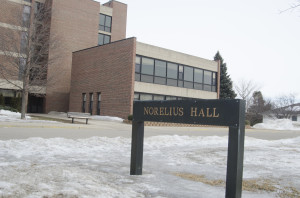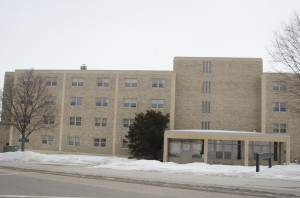As room draw looms near, Gustavus prospective and returning students are faced with a choice between residence halls. For many, this proves a difficult task, as the decision will likely determine the type of experiences intrinsically shaped in the upcoming year. Each residence hall offers a unique range of culture, especially accentuated among the first-year dorms: Pittman, Sohre, and Norelius Hall.
A majority of first-years at Gustavus have developed a distinct perception of culture among the first-year dorms. This mentality is even recognized by upperclassmen.
“There are certain perceptions attached to certain dorms, especially first-year dorms. I believe Pittman and Sohre have the overall perception of being boring to hang out at and live at, whereas Co-ed is the place to be for first-years because it’s where everyone goes to hang out and have all the fun,” Junior Collegiate Fellow Braden Schmid said.

Today, this perception of distinct cultural differences between dorms is recognizable to most who are familiar with Gustavus. Director of Residential Life Charlie Potts points out that about ten years ago this divide was multiplied even further between North versus South side on campus.
“Norelius used to be the only true first-year dorm and every other building had groups of first-years just sort of dropped into them. But then there was this rift where North side was seen as the social, athletic-type people and South side was seen as the less social, artistic-type. The old cafeteria was literally a divide where people sat on the side relative to where they lived,” Potts said.
This substantial divide between North and South began to fade away after Gustavus designated the first-year dorms we have today, but over time certain divides began to form between the first-year dorms. There are many opions as to the cause. Some believe location and layout of the building play a role.
“I think it’s less about the people and more about the structure of the building. In Norelius there are sections where people can hang out and develop a close-knit group of twenty whereas in Pittman the layout is the standard college dorm where great community can happen, it just feels a little different,” Potts said.
Others believe that there will always be differences when comparing dorms, but that contributes to the dorm’s identity.

“There are certain things that contribute to different climates in the dorms like noise levels or traffic in and out, but really it’s simply the size of each dorm and the set up. Rooms that hold two people with no sink or kitchen are more likely to push people to spend time outside of their dorm. Of course, there will be differences when you compare dorms but each contributes and holds its own identity and format,” Sophomore Paget Pengelly said.
While there are many differing opinions about the importance of this issue, there are some who argue that stigmas emerge as a result of student perspective and they change every year.
“Stigmas emerge because of student perspective and perpetuation of stereotypes. Some buildings may appear to have more issues, but when looked at as a function of the campus population at large they have a proportional amount of community concerns. Stigmas and stereotypes of buildings come from people’s belief in those stigmas. There have been buildings on campus that have drastically different student created cultures from last year to this year,” Area Coordinator for Complex and Rundstrom Halls Kevin Bruins said.
